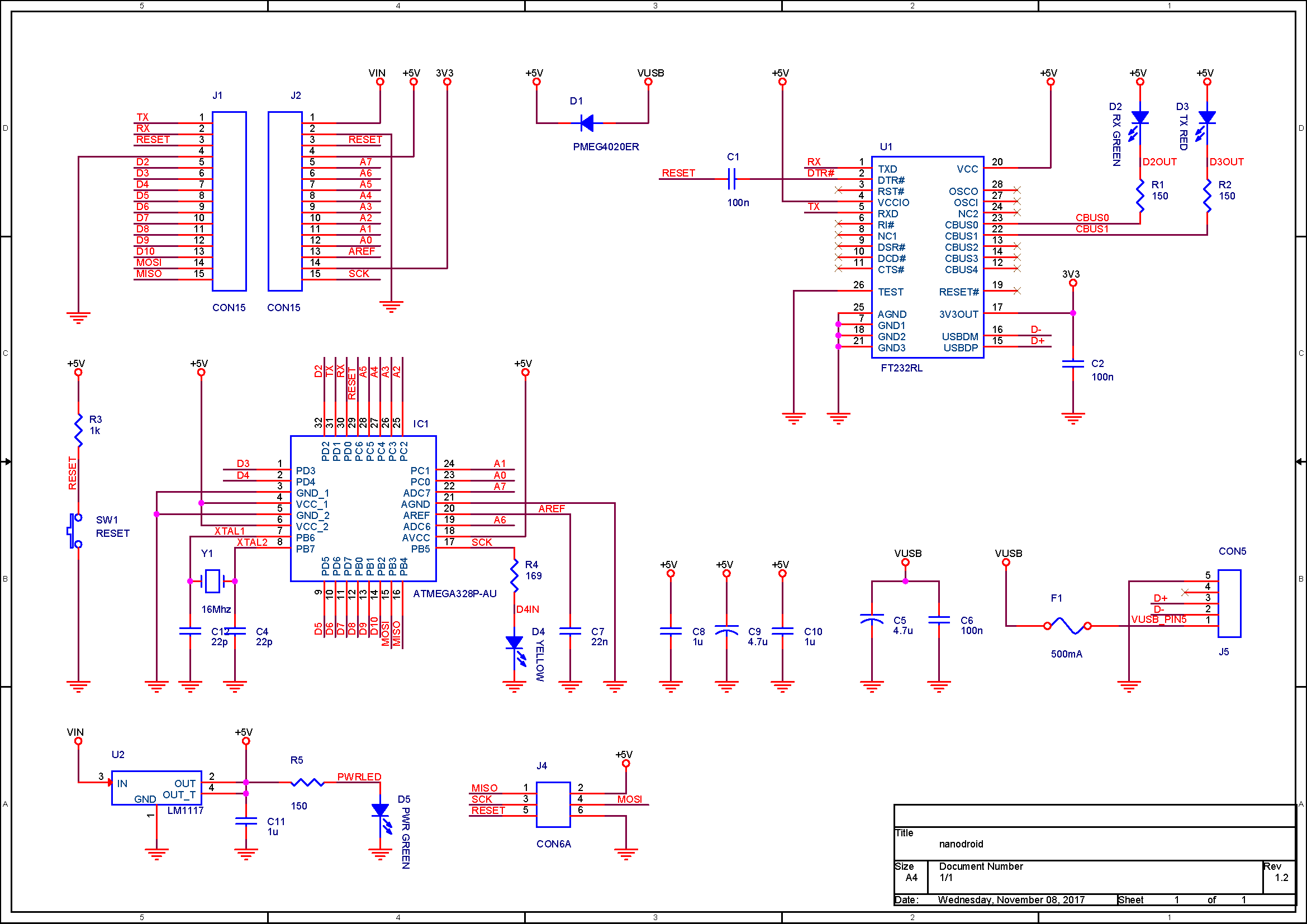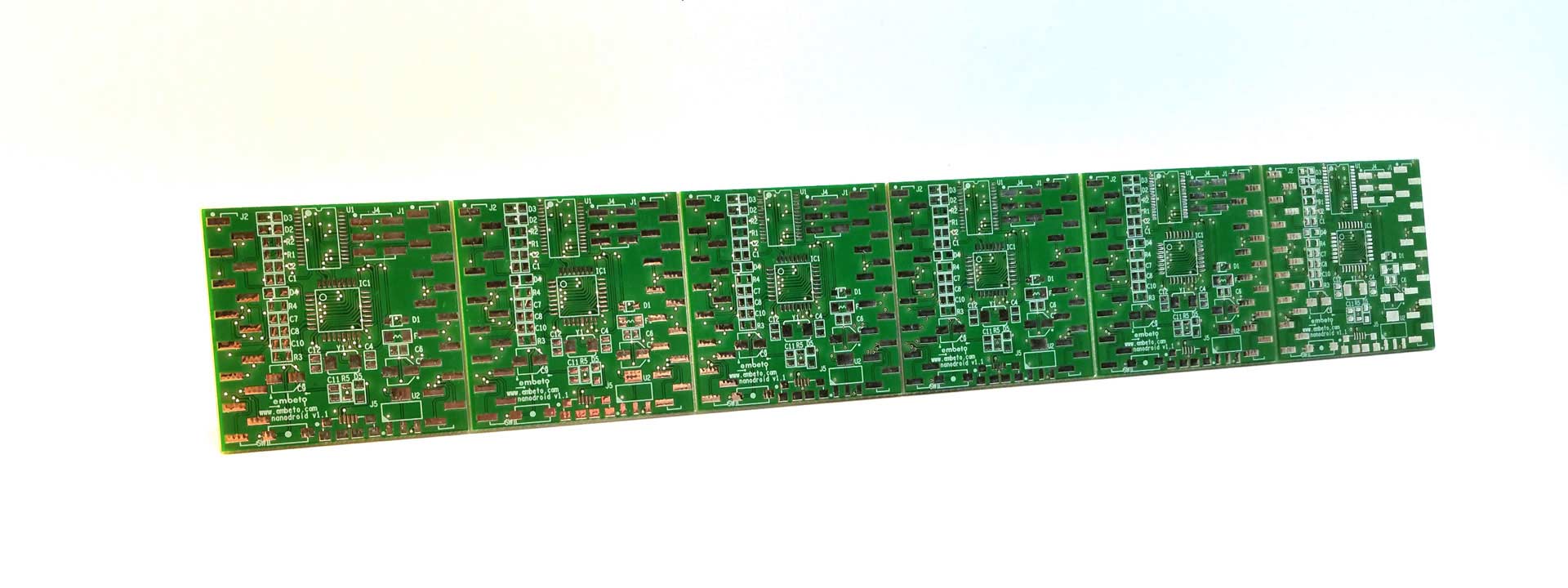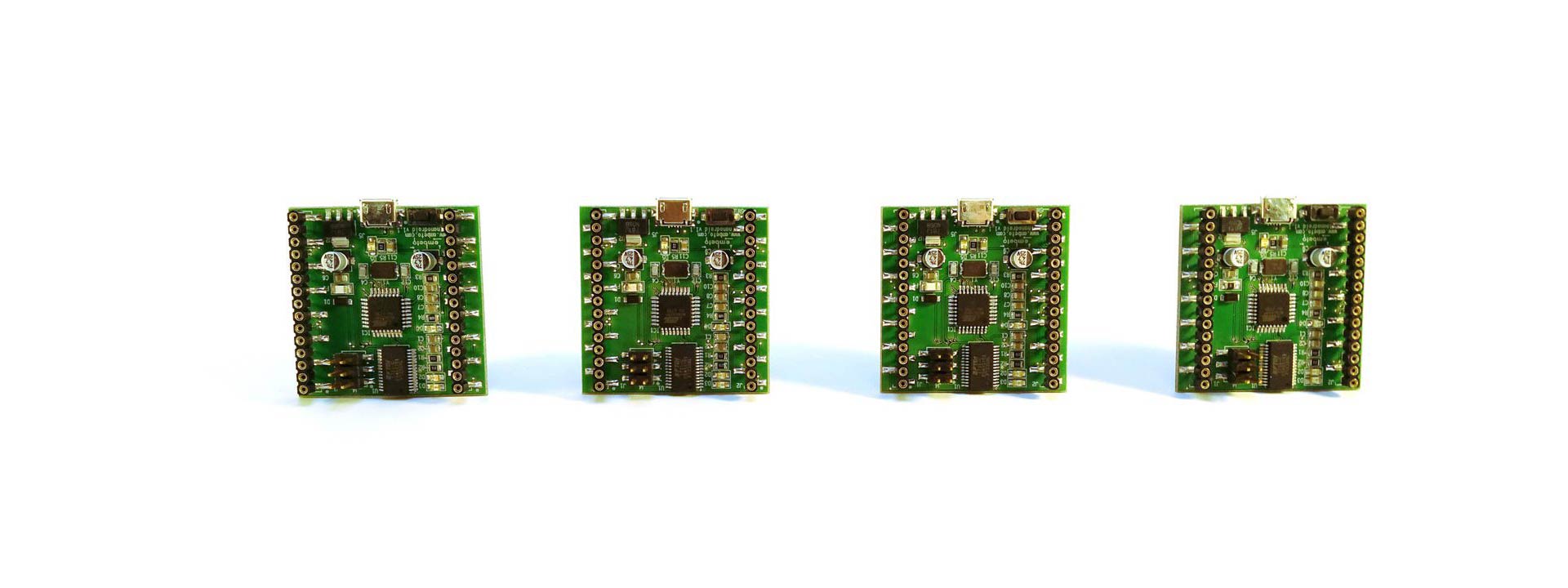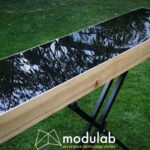Nanodroid was a private Embeto Electronics project produced in a larger quantity (10 pcs) which I developed to be used in the workspace for prototypes and other equipment. Nanodroid was a single-board microcontroller development kit based on Atmega 328P with an on-board USB connection, voltage regulator, and pre-loaded Arduino Nano bootloader. All the MCU’s GPIO pins along with power pins were externally available via two rails of female connectors. For this project, you can check its git repository here.
Hardware Design
Displayed in Figure 1 is the electrical schematic for the circuit board following a typical Arduino Nano arrangement. An FT232 IC is also included for USB connection and some other passive components required for the proper use of the MCU. In Figure 2 there is a pinout diagram attached, provided as a leaflet with the Nanodroid board.
PCB Fabrication and Assembly
As seen in Figure 3 I panelized the boards on my own before sending them to the factory to optimize costs and speed up the production time. I performed the assembling, solder paste printing, and reflow process (Figures 4 to 6) in the Faculty of Electronics’ Center for Electronic Technology and Interconnection Techniques (UPB-CETTI) where I had access as a young researcher. By previously working in the UPB-CETTI facilities on different projects such as sigGen 200, smart cane for VI, or SMSGate I learned the basics in Design for Manufacturing (DFM).
Final Product
In Figure 7 you can see some of the Nanodroid boards. Developing a microcontroller development kit was an interesting process and I integrated some of them in projects such as smart ear tag for Bison or when I developed my own DIY hacked reflow oven, reflowster. I even sold some of the Nanodroid board to some electronics-enthusiast friends!











